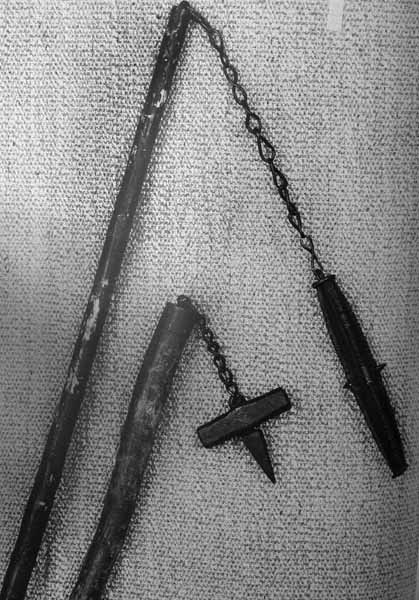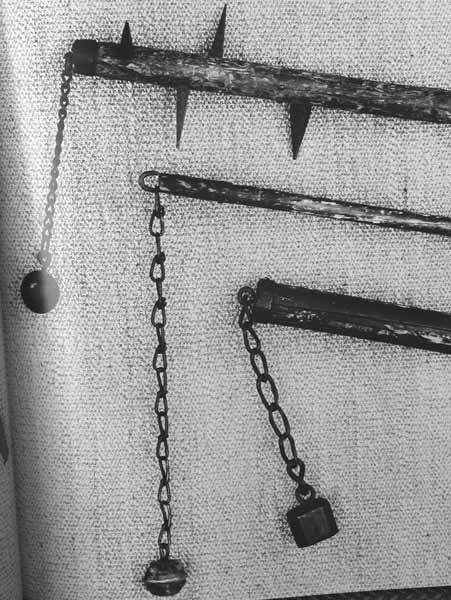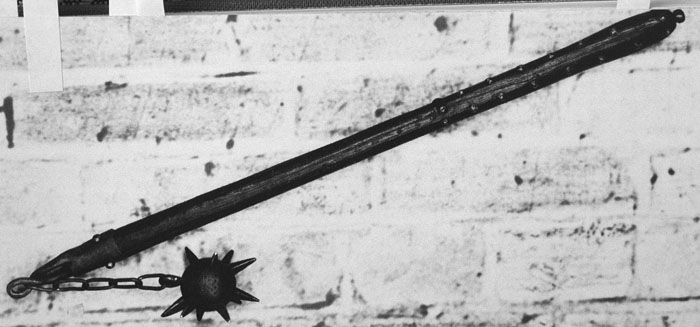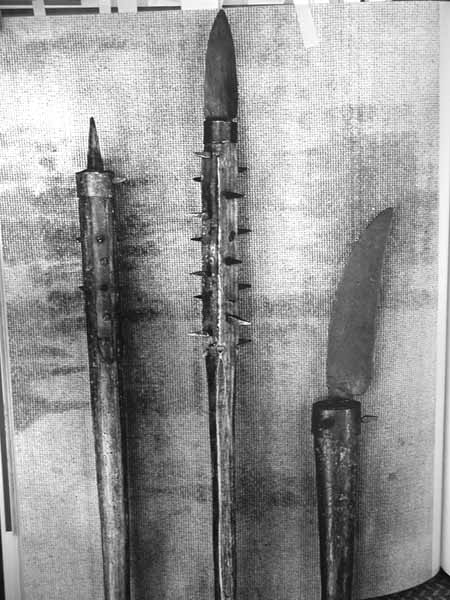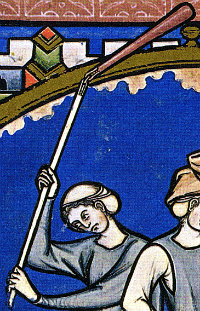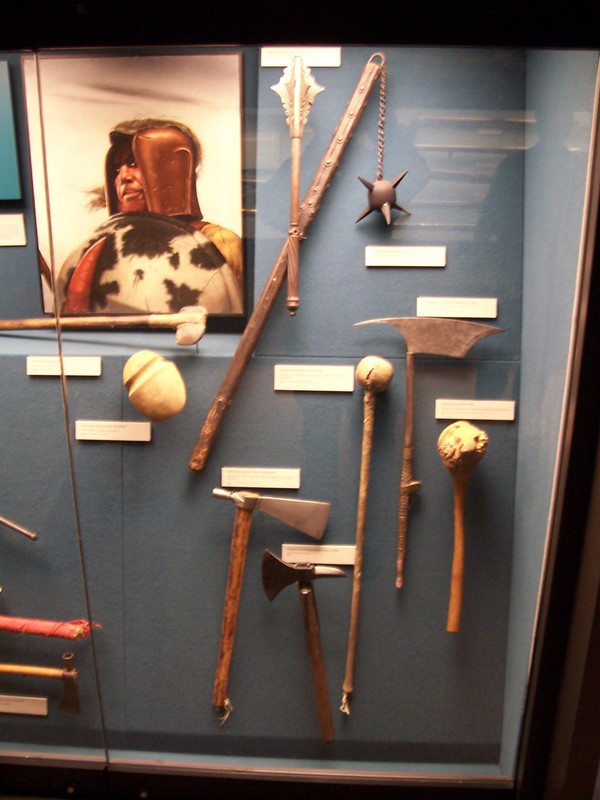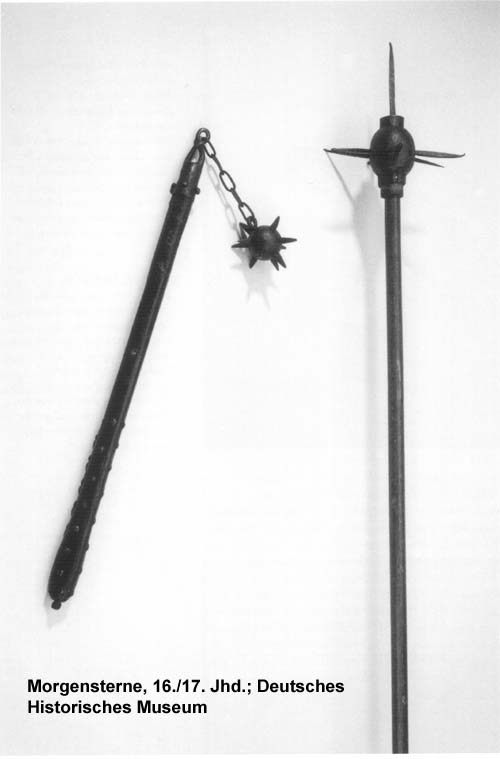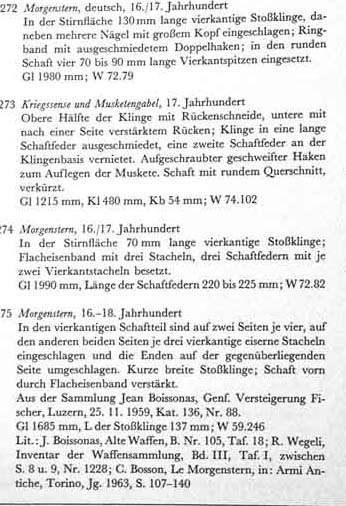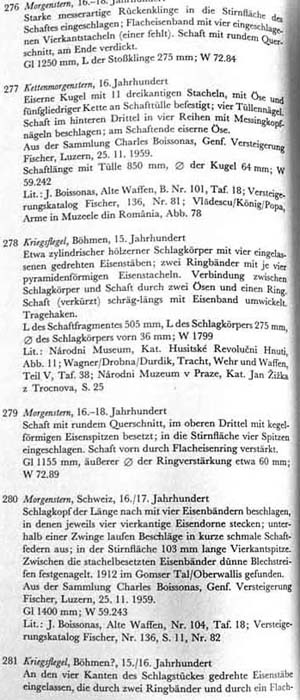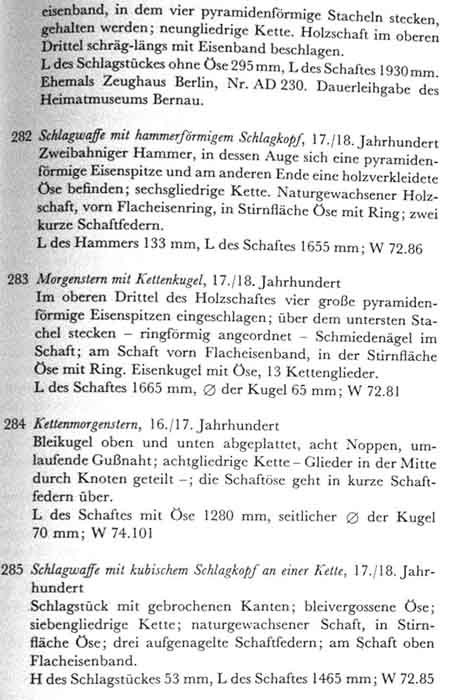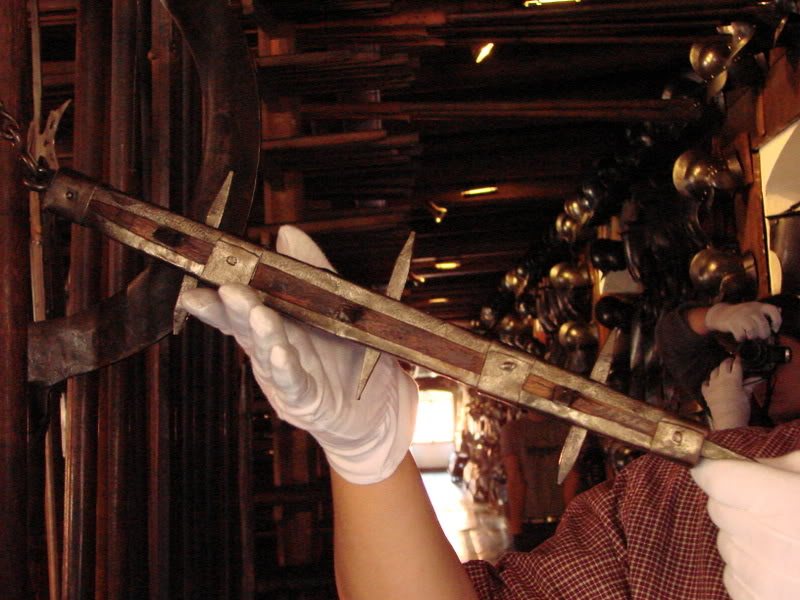One can't overlook the primary advantage of these weapons--cost. They were easily and quickly made by a competent smith, thus could arm every able bodied man against invasion. Farmers would be particularly skilled with the flail, and the civilian tool could easily be militarized--no wonder it was a common choice among peasant infantry and rebels. I have a mogernstern or flail on my long arms and armour to-do list. :D
